Popular
-
Best Fantasy Art Wallpapers A collection of great fantasy images from the best fantasy artists around the world. Free wallpaper downloads fo...
-
Betty Boop Pictures Betty Boop is an animated cartoon character created by animator Max Fleischer, appearing in the Talka...
-
The Little Mermaid Disney Cartoon Animated Design The Little Mermaid is a 1989 American animated film produced by Walt Disney Feature Animat...
-
Patrick Star Cartoon Movie on SpongeBob Animation Patrick Star is a cartoon character SpongeBob SquarePants movie. He is a starfish ...
-
Aladdin Cartoon Arabian Animation Series Aladdin is a 1992 American animated adventure film produced by Walt Disney Feature Animation and re...
Tuesday, April 28, 2009
Tsubasa
Tsubasa Ozora is a young Japanese Elementary school student who is deeply in love with football and dreams of one day winning the FIFA World Cup for Japan. He lives together with his mother in Japan, while his father is a seafaring captain who travels around the world.TsubasaTsubasa Ozora is known as the Soccer no Moshigo which translates as "heaven-sent child of soccer". When he was only barely
Captain Tsubasa
Captain Tsubasa (Kyaputen Tsubasa) is a popular long running Japanese manga, anime, and video game series, originally created by Yoichi Takahashi in 1981. The series mainly revolves around the sport of Football.Captain TsubasaThe story focuses on the adventures of a Japanese youth football team and its football captain Tsubasa Ozora (Ōzora Tsubasa), whose name literally translates to "Big Sky
Captain Tsubasa Manga
The original Captain Tsubasa manga series was adapted soon into an anime series, produced by Group TAC and Toei Animation, whose first season premiered in Japan on the TV Tokyo network between 10 October 1983 and 27 March 1986. This first serie tells only the synopsis of the first 25 volumes. Four anime movies followed soon, between 1985 and 1986, continuing the storyline. In 1989 a new anime
Air Gear
Air Gear (Ea Gia) is a shōnen manga and anime by the mangaka Oh! great. Air Gear is about the life of Itsuki Minami "Ikki", also known as "Baby face" and "Lil (and Little) Crow", and his friends. The story follows their use of Air Trecks, an in-universe invention derived from inline skates. The early parts of the story carry out the introduction of characters that eventually join Ikki. As the
Air Gear Wallpaper
These are some wallpapers of Air Gear manga:Air Gear WallpaperAir Gear Wallpaper
Saint Seiya
Saint Seiya, also known as Knights of the Zodiac, is a Japanese manga series written and illustrated by Masami Kurumada, and later adapted to anime. The story follows five mystical warriors called the "Saints" (or "Knights"; the kanji is properly read as sei-tōshi "holy fighter" but the furigana has it pronounced "saint") who have adopted various constellations as their guardian symbols. The
Saint Seiya Athena
The Greek goddess Athena (spelled in Greek as Ἀθηνᾶ and Ἀσάνα, in the manga and the anime adaptation respectively, and occasionally as Ἀθάνα in both) is one of the main characters in the Manga Saint Seiya, authored by Masami Kurumada, and later adapted to Anime. A character with a substantial importance in the universe of Saint Seiya, she was created by Kurumada based on the mythologic persona of
Saint Seiya Wallpaper
These are some of Saint Seiya wallpapers for you:Saint SeiyaSaint Seiya
Sunday, April 26, 2009
Friday, April 24, 2009
Samurai X
Rurouni Kenshin: Meiji Swordsman Romantic Story (Rurōni Kenshin Meiji Kenkaku Romantan) is a Japanese manga series written and illustrated by Nobuhiro Watsuki. The fictional setting takes place during the early Meiji period in Japan. The story is about a fictional assassin named Himura Kenshin, formerly known as the "Hitokiri Battōsai" ("Hitokiri Battōsai" or "Battosai the Manslayer" in the
Samurai X Manga
Written and drawn by Nobuhiro Watsuki, the first chapter of Rurouni Kenshin premiered in Weekly Shōnen Jump in 1994 and was serialized in the magazine until 1999. The 255 individual chapters were collected and published in 28 tankōbon volumes by Shueisha, with the first volume released on September 9, 1994 and the last on November 4, 1999. In July 2006, Shueisha began re-releasing the series in a
Kenshin
Kenshin, known as Kenshin Himura in the English-language dub, is a fictional character from the Rurouni Kenshin universe created by Nobuhiro Watsuki. He is the main protagonist of the manga and anime series, as well as the related media in the franchise. When creating Kenshin, Watsuki designed him to be the physical opposite of Hiko Seijūrō, a character that appears in Watsuki's first one-shot
Rurouni Kenshin
The story of Rurouni Kenshin takes place during the early Meiji period in Japan. It tells the story of a peaceful wanderer named Himura Kenshin, formerly known as the assassin Hitokiri Battōsai. After participating during the Bakumatsu war, Kenshin wanders the countryside of Japan offering protection and aid to those in need as atonement for the murders he once committed as an assassin.When
Kamiya Kaoru
Kamiya Kaoru, known as Kaoru Kamiya in the English-language dub, is a fictional character from the Rurouni Kenshin universe created by Nobuhiro Watsuki as a main protagonist of the media franchise, which consists of a series of manga, anime, OVAs, movies, soundtracks, video games, and other collectibles.Kamiya KaoruKamiya KaoruIn the story, Kaoru is the teacher from a kendo school from Tokyo
Sagara Sanosuke
Sagara Sanosuke is a fictional character from the Rurouni Kenshin anime and manga series created by Nobuhiro Watsuki. He is known as Sanosuke Sagara in the English adaptation of the anime and is nicknamed Sano. Watsuki, being a fan of the Shinsengumi, created Sanosuke by basing his name and characteristics on that of a real Shinsengumi member named Harada Sanosuke. Sagara SanosukeSet during a
Saito Hajime
Saitō Hajime is a fictional character in the anime and manga series Rurouni Kenshin created by Nobuhiro Watsuki.His name is given as Hajime Saitō in Western-order, which is the chosen order used in the English anime.Saito HajimeSaitō Hajime (1844-1915) was an actual historic figure of the Meiji era, and a number of details presented in the fictional characters are based on facts.When creating the
The Transformers Optimus Prime

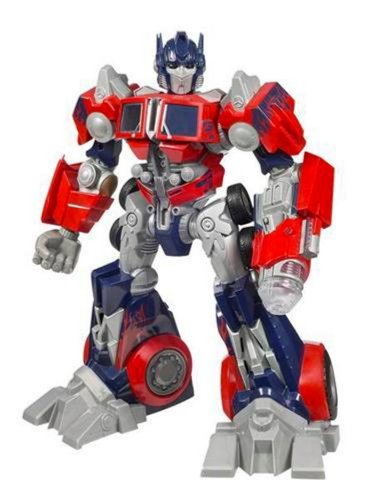

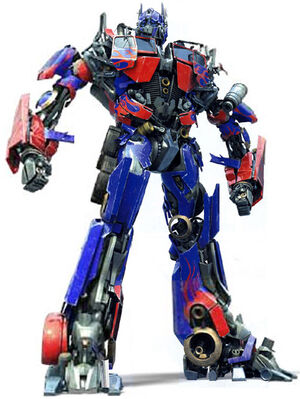
Optimus Prime is a fictional character and the protagonist of the Transformers universes. He was initially given the name Optimus Primal in the Beast Wars toy line and comic book, although Primal was later altered to be a different character from Prime.Optimus Prime is a character in the Transformers universe. He is the commander of the Autobots, a faction of heroic Transformers from the planet Cybertron who wage their battles against the evil forces of the Decepticons for control of their homeworld, and by extension, peace in the universe. Optimus Prime is depicted as a heroic, brave and compassionate character who puts all his talent to use to improve the world around him. Optimus has a strong sense of justice and righteousness, and has dedicated himself to the protection of all life, particularly the inhabitants of Earth; he will battle his foes with unyielding resolve to uphold this belief. He always seems to wear a mask over his mouth. The original Optimus Prime transforms into a cab over semi truck. The truck's cab transforms into the robot mode of Prime himself, with vast strength and armed with a laser rifle. Contained within his chest is the mystic talisman known as the Autobot Matrix of Leadership, carried by all Autobot leaders and passed down through the ages. The comic book continuities tend to claim that Optimus' direct predecessor as Prime and thus bearer of the Matrix was Sentinel Prime, a fact which is part of the Dreamwave comics canon. In the cartoon continuity, it is unknown who Optimus inherited the talisman from, as he is already named as a Prime when Alpha Trion rebuilds him from his former self, which appears to indicate that Alpha Trion may have given Prime the Matrix at that point in time just after the transformation of Orion Pax into Optimus Prime. This change is depicted in the episode War Dawn. The truck's trailer disconnects and transforms into the Combat Deck, a mobile battle-station/command headquarters with an "Auto-Launcher" robot armed with assorted artillery and beam weapons. It can also serve as a radio antenna for battlefield communications between the Autobots. The Combat Deck can launch Prime's third component, Roller, a mobile scout buggy that can easily slip behind enemy lines. Optimus' senses are tied into Roller's, and can perceive what Roller does. Injury to one component is felt by each of the others, and while Prime could survive the destruction of either, despite the slight degree of autonomy they possess, the Combat Deck and Roller would not be able to survive without him. Additional powers included in the animated series and comics are short-range optic blasts, holographic map projections, a palm mounted, triangle-shaped repulsor projector and deployable hydro-foils designed by Wheeljack which allowed Prime and the other Autobots to traverse bodies of water with ease. One of Prime's more memorable[who?] abilities from the animated series was the ability to retract his right hand and replace it with a glowing energon axe; although used only once, the axe proved popular enough to be rendered in toy form several times in recent years, and made an appearance in the Dreamwave Productions and Devil's Due Publishing comic series.
Megatron The Transformers




Megatron is a character from the Transformers. He is the evil leader of the Decepticons and the primary antagonist of the series.The Megatron toy has been seized by Customs in Sydney because it can be mistaken for a real weapon. Customs seized more than 50 MP-05 Masterpiece Megatron Transformers in inbound foreign mail. U.S. Customs has also forbidden imports of Masterpiece Megatron toys unless the boxes are opened by the seller and an orange muzzle cap is placed on the toy. Imports without the cap are liable to be seized by customs upon entry.
Megatron is a Decepticon, one of the lineal descendants of the military hardware robots created by the Quintessons on their factory world of Cybertron. Following a war between the Decepticons and the other robot race, the Autobots, the Decepticons were defeated by the Autobots' invention of transformation. The Autobot victory began the Golden Age of Cybertron, but the Decepticons too eventually developed transformation, leading to the creation of Megatron. Gathering a small number of troops together, Megatron killed the Autobot leader. However, the ancient Autobot, Alpha Trion reconstructed young robot Orion Pax into Optimus Prime, leader of the Autobots as the war erupted again. The war drained Cybertron of most of its energy, necessitating that both factions seek out new worlds and new sources of power. Megatron and his forces attacked and boarded the Autobots' craft, causing it to crash on prehistoric Earth, entombing all on the ship in emergency stasis as it crashed into a dormant volcano. Over the following years, Megatron's schemes to obtain Earth's energies continued. Megatron even made a number of temporary alliances with the Autobots, although most of these alliances ended in double crosses.
Megatron is a Decepticon, one of the lineal descendants of the military hardware robots created by the Quintessons on their factory world of Cybertron. Following a war between the Decepticons and the other robot race, the Autobots, the Decepticons were defeated by the Autobots' invention of transformation. The Autobot victory began the Golden Age of Cybertron, but the Decepticons too eventually developed transformation, leading to the creation of Megatron. Gathering a small number of troops together, Megatron killed the Autobot leader. However, the ancient Autobot, Alpha Trion reconstructed young robot Orion Pax into Optimus Prime, leader of the Autobots as the war erupted again. The war drained Cybertron of most of its energy, necessitating that both factions seek out new worlds and new sources of power. Megatron and his forces attacked and boarded the Autobots' craft, causing it to crash on prehistoric Earth, entombing all on the ship in emergency stasis as it crashed into a dormant volcano. Over the following years, Megatron's schemes to obtain Earth's energies continued. Megatron even made a number of temporary alliances with the Autobots, although most of these alliances ended in double crosses.
The Transformer



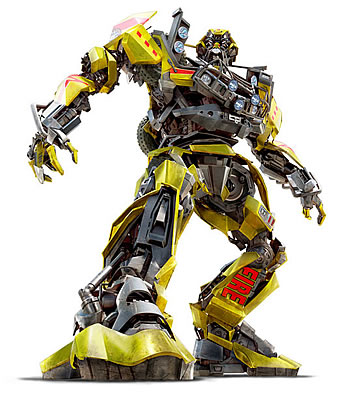
A transformer is a device that transfers electrical energy from one circuit to another through inductively coupled conductors — the transformer's coils or "windings". Except for air-core transformers, the conductors are commonly wound around a single iron-rich core, or around separate but magnetically-coupled cores. A varying current in the first or "primary" winding creates a varying magnetic field in the core (or cores) of the transformer. This varying magnetic field induces a varying electromotive force or "voltage" in the "secondary" winding. This effect is called mutual induction.
If a load is connected to the secondary, an electric current will flow in the secondary winding and electrical energy will flow from the primary circuit through the transformer to the load. In an ideal transformer, the induced voltage in the secondary winding is in proportion to the primary voltage (VP), and is given by the ratio of the number of turns in the secondary to the number of turns in the primary as follows:
By appropriate selection of the ratio of turns, a transformer thus allows an alternating current voltage to be "stepped up" by making NS greater than NP, or "stepped down" by making NS less than NP. Transformers come in a range of sizes from a thumbnail-sized coupling transformer hidden inside a stage microphone to huge units weighing hundreds of tons used to interconnect portions of national power grids. All operate with the same basic principles, although the range of designs is wide. While new technologies have eliminated the need for transformers in some electronic circuits, transformers are still found in nearly all electronic devices designed for household ("mains") voltage. Transformers are essential for high voltage power transmission, which makes long distance transmission economically practical.
Activision has finally released some information regarding the Transformer game based on the upcoming movie by Michael Bay. The game will be called Transformers: The Game and will be available for Xbox 360, PS3, DS, Wii, and PC. Players will be able to control both the Autobots and Decepticons. The playable characters include Optimus Prime, Megatron, Starscream, Bumblebee, and Inronhide along with many more characters to be named at later date. You will be able to fully transform between robot form and vehicle form. The environment will come into play as it will be affected by player?s actions. Other than that, little is known about the exact play style and game play mechanics.
If a load is connected to the secondary, an electric current will flow in the secondary winding and electrical energy will flow from the primary circuit through the transformer to the load. In an ideal transformer, the induced voltage in the secondary winding is in proportion to the primary voltage (VP), and is given by the ratio of the number of turns in the secondary to the number of turns in the primary as follows:
By appropriate selection of the ratio of turns, a transformer thus allows an alternating current voltage to be "stepped up" by making NS greater than NP, or "stepped down" by making NS less than NP. Transformers come in a range of sizes from a thumbnail-sized coupling transformer hidden inside a stage microphone to huge units weighing hundreds of tons used to interconnect portions of national power grids. All operate with the same basic principles, although the range of designs is wide. While new technologies have eliminated the need for transformers in some electronic circuits, transformers are still found in nearly all electronic devices designed for household ("mains") voltage. Transformers are essential for high voltage power transmission, which makes long distance transmission economically practical.
Activision has finally released some information regarding the Transformer game based on the upcoming movie by Michael Bay. The game will be called Transformers: The Game and will be available for Xbox 360, PS3, DS, Wii, and PC. Players will be able to control both the Autobots and Decepticons. The playable characters include Optimus Prime, Megatron, Starscream, Bumblebee, and Inronhide along with many more characters to be named at later date. You will be able to fully transform between robot form and vehicle form. The environment will come into play as it will be affected by player?s actions. Other than that, little is known about the exact play style and game play mechanics.
Friday, April 17, 2009
Naruto Manga
Naruto premiered in Shueisha's Weekly Shōnen Jump magazine in 1999. The first 238 chapters are known as Part I, and constitute the first part of the Naruto storyline. Manga chapters 239 to 244 comprise a gaiden series focusing on the background of the character Kakashi Hatake. All subsequent chapters belong to Part II, which continues the storyline in Part I after a two and a half year time jump.
Naruto Comic
Naruto has been well received in both Japan and the United States. As of volume 36, the manga has sold over 71 million copies in Japan. During 2008, volume 43 sold 1,188,881 copies becoming the 9th best-seller comic from Japan. Volumes 42, 44, 41 also ranked within the top 20, but they had smaller sold copies.Naruto ComicThe Naruto manga series has become one of Viz's top properties, accounting
Naruto Characters
The Naruto anime and manga series features an extensive cast of characters created by Masashi Kishimoto. The series takes place in a fictional universe where different countries vie for power by using ninja who can use supernatural abilities in combat. The Naruto storyline is divided into two parts, simply named Part I and Part II, with the latter taking place two-and-a-half years after the
Naruto Wallpaper
Amazing Naruto wallpaper here:Naruto WallpaperNaruto Wallpaper
Naruto Art
Several supplementary books of the Naruto series have been released. An artbook named The Art of Naruto: Uzumaki contains illustration of Part I manga and was released in both Japan and the United States. For the Part II manga, an artbook called PAINT JUMP: Art of Naruto was released by Shueisha on April 4, 2008.Naruto ArtA series of guidebooks for the Part I called First Official Data Book and
Naruto Art Gallery
Naruto art gallery here:Naruto Art GalleryNaruto Art Gallery
Naruto Drawings
You can drawing naruto characters here:Naruto DrawingsNaruto Drawings
Thursday, April 16, 2009
The Scooby Doo
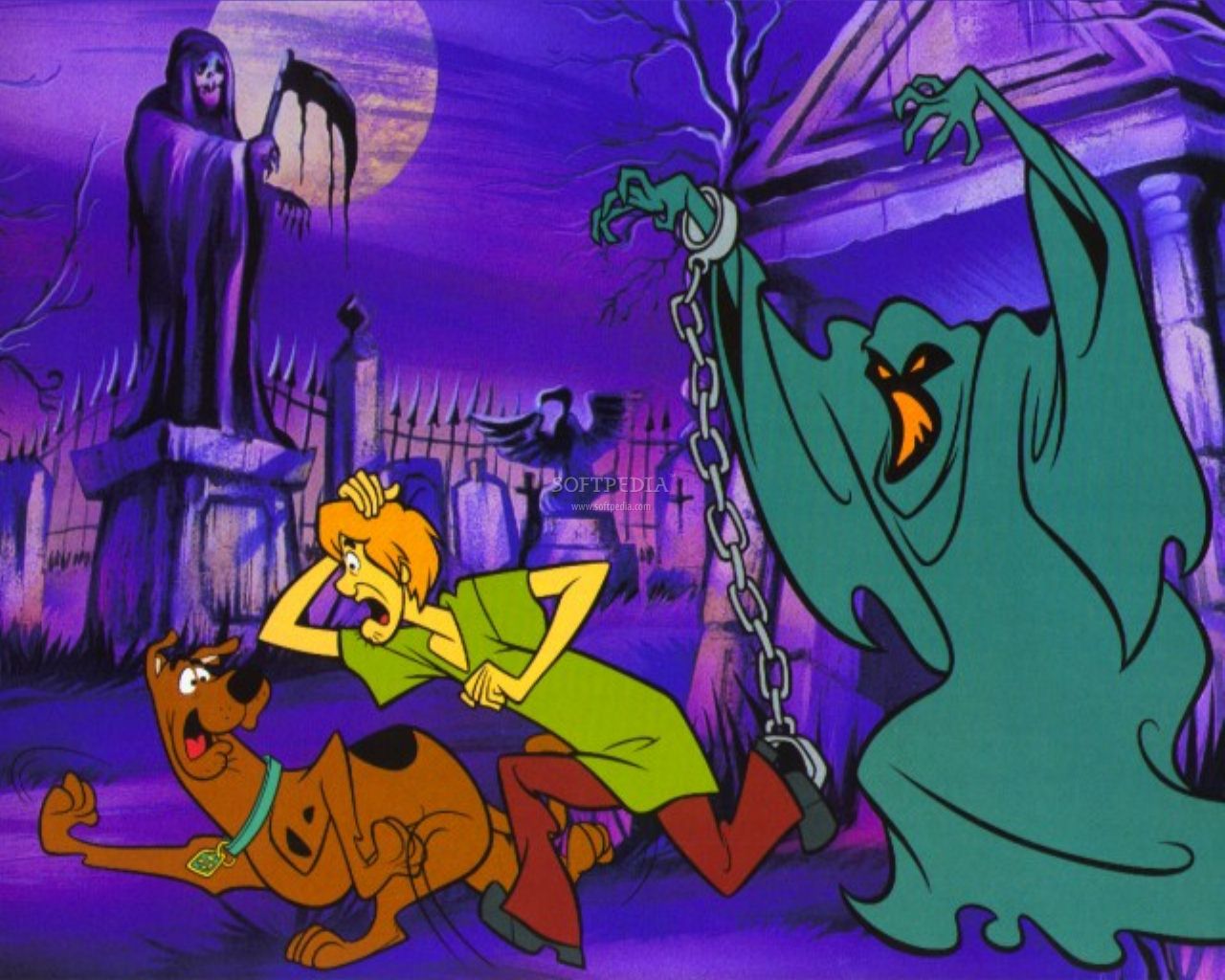
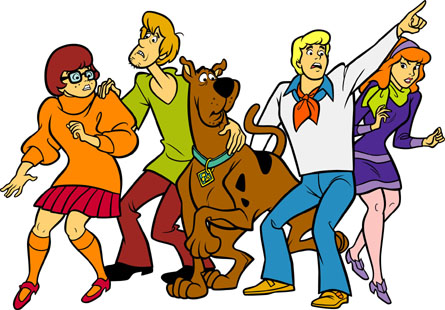



Scooby-Doo is a long-running American animated series produced for Saturday morning television in several different versions from 1969 to the present. The original series, Scooby-Doo, Where Are You!, was created for Hanna-Barbera Productions by writers Joe Ruby and Ken Spears, CBS executive Fred Silverman, and character designer Iwao Takamoto. Hanna-Barbara produced numerous spin-offs and related works until being absorbed in 1997 into Warner Bros. Animation, which has handled production since then. Although the format of the show and the cast of characters have varied significantly over the years, the most familiar versions of the show feature a talking dog named Scooby Dooby Doo and four teenagers or young adults: Fred "Freddie" Jones, Daphne Blake, Velma Dinkley, and Norville "Shaggy" Rogers.
These five characters drive around in the Mystery Machine van, solving mysteries by exposing seemingly otherworldly ghosts and monsters as flesh and blood crooks. Later versions of Scooby-Doo featured different variations on the show's supernatural theme, and include characters such as Scooby's cousin Scooby-Dum and nephew Scrappy-Doo in addition to or instead of some of the original characters.
Scooby-Doo was originally broadcast on CBS from 1969 to 1976, when it moved to ABC. ABC aired the show until canceling it in 1986, and presented a spin-off, A Pup Named Scooby-Doo, from 1988 until 1991, which featured the characters as children. The series was revived for the WB Network's Kids' WB programming block as What's New, Scooby-Doo?, which ran from 2002 until 2006. The most recent Scooby-Doo series, Shaggy & Scooby-Doo Get a Clue!, ran from 2006 to 2008 on The CW network; a new series, Scooby-Doo - Mystery Inc., will begin airing on the Cartoon Network in 2009. [2] Repeats of the series are broadcast frequently on the Cartoon Network and Boomerang in the United States and other countries.
These five characters drive around in the Mystery Machine van, solving mysteries by exposing seemingly otherworldly ghosts and monsters as flesh and blood crooks. Later versions of Scooby-Doo featured different variations on the show's supernatural theme, and include characters such as Scooby's cousin Scooby-Dum and nephew Scrappy-Doo in addition to or instead of some of the original characters.
Scooby-Doo was originally broadcast on CBS from 1969 to 1976, when it moved to ABC. ABC aired the show until canceling it in 1986, and presented a spin-off, A Pup Named Scooby-Doo, from 1988 until 1991, which featured the characters as children. The series was revived for the WB Network's Kids' WB programming block as What's New, Scooby-Doo?, which ran from 2002 until 2006. The most recent Scooby-Doo series, Shaggy & Scooby-Doo Get a Clue!, ran from 2006 to 2008 on The CW network; a new series, Scooby-Doo - Mystery Inc., will begin airing on the Cartoon Network in 2009. [2] Repeats of the series are broadcast frequently on the Cartoon Network and Boomerang in the United States and other countries.
Pokemon Battle
Pokémon Battle Revolution (ポケモンバトルレボリューション, Pokemon Batoru Reboryūshon?) is the first Wii incarnation of the Pokémon video game franchise. It is also the first Wii game to use the Nintendo Wi-Fi Connection in North America and Japan and the first Wii game to wirelessly interact with the Nintendo DS handheld.Pokemon BattlePokemon BattlePokémon Battle Revolution features eleven different colosseums
Pokemon Cards
The Pokémon Trading Card Game (Pokémon TCG) is a collectible card game based on the Pokémon video game series, first introduced in Japan in October 1996, then North America in December 1998. It was initially published by Wizards of the Coast, the company that produces Magic: the Gathering. Although Wizards of the Coast lost the licence to publish the game in July 2003, sets continue to be
Pokemon Blue
Blue is the commonly referred-to name of a major character in the various games. He is the rival of Red and the grandson of Professor Oak. His style is mixed, and he does not specialize in any type. He is a non-playable character in both the first and second generations of Pokémon games. In the Japanese video games, he is most commonly known as Green, and has alternate name choices of "Gary" and
Pokemon Red
Pokémon Red (Poketto Monsutā Aka?, "Pocket Monsters Red") and Pokémon Blue (Poketto Monsutā Ao?, "Pocket Monsters Blue"), released in Japan as Pocket Monster Red and Pocket Monster Green (Poketto Monsutā Midori?), are the first two installments of the Pokémon series of role-playing games developed by Game Freak and published by Nintendo. They were first released for the Game Boy in Japan on
Pokemon Ruby
Pokémon Ruby and Pokémon Sapphire, released in Japan as Pocket Monsters Ruby and Pocket Monsters Sapphire (ポケットモンスター ルビー・サファイア, Poketto Monsutā Rubī, Safaia?), are both the third installments of the Pokémon series of role-playing games, developed by Game Freak and published by Nintendo for the Game Boy Advance. The games were first released in Japan in late 2002; they later released to the rest
Pokemon
The Pokémon anime series and films are a meta-series of adventures separate from the canon that most of the Pokémon video games follow (with the exception of Pokémon Yellow, a game based on the anime storyline). The anime follows the quest of the main character, Ash Ketchum (known as Satoshi in Japan) a Pokémon Master in training, as he and a small group of friends travel around the fictitious
Pokemon Diamond
Pokemon on the DS is nothing new -- we've already received Pokemon Dash, Pokemon Trozei, and Pokemon Ranger in the system's two years of life. But it's the RPG design the public's clamoring for, not the spin-offs -- those games were just biding the time while Game Freaks cranked out the enormous, ambitious, real deal Pokemon project. It doesn't matter what's going to be said in the next thousand
Pokemon Emerald
There's no denying the success of Pokémon is based on a very worthy formula, and much to a degree deserves its long running triumph. Nintendo has crafted a game that takes the more accessible elements of children's story narrative (relatable brave child entering a vast and unknown world of discovery), toy/card collecting (you find your Pokémon of varying abilities, train them into a fighting
Wednesday, April 15, 2009
The Incredible Hulk Pictures
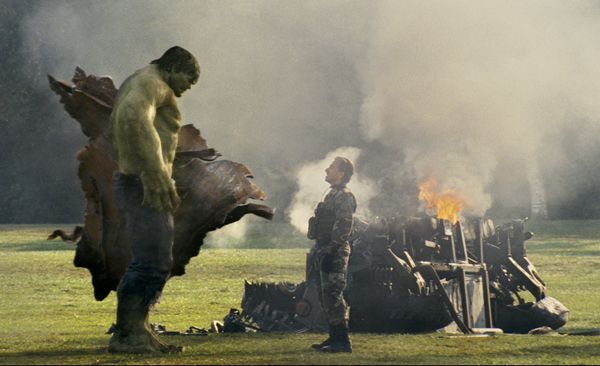




The Incredible Hulk is a 2008 superhero film based on the Marvel Comics character the Hulk. It is directed by Louis Leterrier and stars Edward Norton as Dr. Bruce Banner/the Hulk. It is not a sequel to Hulk (2003), but rather a reboot that establishes a new back-story where Banner became the Hulk as an unwitting pawn in a military scheme to reinvigorate the supersoldier program through gamma radiation. On the run, he attempts to cure himself of the Hulk before he is captured by General Thaddeus "Thunderbolt" Ross (William Hurt), but his worst fears are realized when power-hungry soldier Emil Blonsky (Tim Roth) becomes the Abomination. Liv Tyler also stars as Betty Ross, Banner's girlfriend and General Ross's daughter.
Marvel Studios reacquired the rights to the character after the mixed reception to Hulk, and writer Zak Penn began work on a loose sequel that would be much closer to the comics and the television series. Norton rewrote the script after he signed on to star, which clarified the film's new back-story. Leterrier aimed to make the film realistic, giving a more frightening direction for the look of the monsters, while redesigning the Abomination from the comics' reptilian humanoid into a mutated man with bony protrusions. Filming mostly took place in Toronto, Canada in 2007, where the production attempted to be environmentally friendly.
Marvel Studios reacquired the rights to the character after the mixed reception to Hulk, and writer Zak Penn began work on a loose sequel that would be much closer to the comics and the television series. Norton rewrote the script after he signed on to star, which clarified the film's new back-story. Leterrier aimed to make the film realistic, giving a more frightening direction for the look of the monsters, while redesigning the Abomination from the comics' reptilian humanoid into a mutated man with bony protrusions. Filming mostly took place in Toronto, Canada in 2007, where the production attempted to be environmentally friendly.
Liv Tyler Hulk Pictures







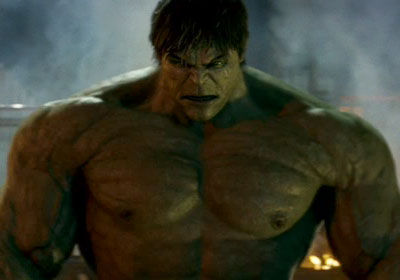
Ross, a classic "Hulk" character from the comic book's beginning in 1962, is Banner's fellow scientist and an ally in his quest to rid him of his lurking monster deep inside. The movie will unfold with Ross estranged from Banner (Norton), but with the pursuit of the Hulk heating up and Banner on the run trying to cure his condition, Ross finds herself swept back into his life.
Good news – that isn’t the case. It’s got plenty of action but it’s got decent characters. Characters that comics fans will recognise, not the usual altered-for-movie versions we’ve often been fed. It’s actually got a story; it has violence, battles and effects but it has some heart, it has some romance, it elicits sympathy for Banner/Hulk and his predicament. In short its as good as the recent Iron Man (perhaps even better) – it’s a summer blockbuster, but its one with some style and integrity to the source comics. Hulk may smash, but he also rocks. That’s the short, spoiler-free version – if you want to go and see it without knowing any more other than its damned good and worth seeing, stop reading now. Not that I’ll blow any big spoilers, but I don’t want to hint at something some folks might not want to know before they catch it. Rest of you still with me? Okay, let’s move on.
My initial ambivalence towards this second Hulk movie started to melt away pretty much from the get-go – the opening credits fill in a bit of back story to Bruce Banner’s accident for those who weren’t familiar with the first flick. Which is maybe what you might expect, but the nice thing is in the details – several rapid sequences in these opening flashbacks reference the opening credits of the old 70s Bill Bixby/Lou Ferrigno TV Hulk series, which, however cheesy it might be now, a lot of us have fond memories of (some of the changes also homage the show – close-up of Banner’s eyes lit up as the rest of the face is in shadow, the eyes going green; it could almost be Bill Bixby). Little details like that may skip by the casual cinema goer, but to the comics geek they show that the film-makers are determined to stay respectful to the source and history of the character, at least as much as they can in a different medium.
Good news – that isn’t the case. It’s got plenty of action but it’s got decent characters. Characters that comics fans will recognise, not the usual altered-for-movie versions we’ve often been fed. It’s actually got a story; it has violence, battles and effects but it has some heart, it has some romance, it elicits sympathy for Banner/Hulk and his predicament. In short its as good as the recent Iron Man (perhaps even better) – it’s a summer blockbuster, but its one with some style and integrity to the source comics. Hulk may smash, but he also rocks. That’s the short, spoiler-free version – if you want to go and see it without knowing any more other than its damned good and worth seeing, stop reading now. Not that I’ll blow any big spoilers, but I don’t want to hint at something some folks might not want to know before they catch it. Rest of you still with me? Okay, let’s move on.
My initial ambivalence towards this second Hulk movie started to melt away pretty much from the get-go – the opening credits fill in a bit of back story to Bruce Banner’s accident for those who weren’t familiar with the first flick. Which is maybe what you might expect, but the nice thing is in the details – several rapid sequences in these opening flashbacks reference the opening credits of the old 70s Bill Bixby/Lou Ferrigno TV Hulk series, which, however cheesy it might be now, a lot of us have fond memories of (some of the changes also homage the show – close-up of Banner’s eyes lit up as the rest of the face is in shadow, the eyes going green; it could almost be Bill Bixby). Little details like that may skip by the casual cinema goer, but to the comics geek they show that the film-makers are determined to stay respectful to the source and history of the character, at least as much as they can in a different medium.
Tuesday, April 14, 2009
Scooby Doo 2 Monsters Pictures



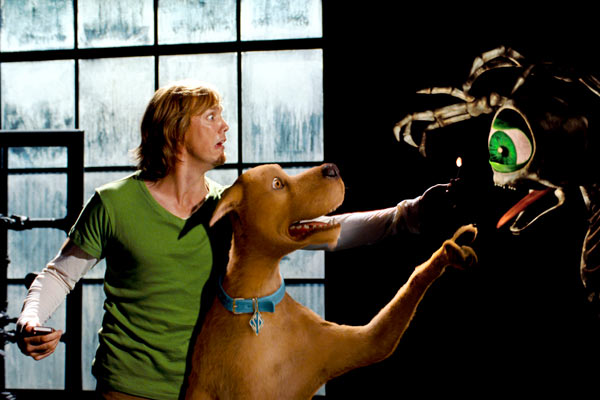

There are two things that one can learn from watching Scooby-Doo 2: Monsters Unleashed. The first is that with a lot of money, a crew can do wonders with paint. Scooby-Doo 2 is a wonderfully vibrant, colorful movie. Bright greens, oranges, and purples constantly fill the screen. All of the clothes, cars, costumes, and settings are vividly imagined. The second is that Matthew Lillard as Shaggy does an uncanny impression of Casey Kasem. Both these observations overlook the fact that Scooby-Doo 2 is a pretty worthless movie. It didn't even muster the energy for a story. This is just a bunch of people running around in colorful retro clothes looking for something to do. There is no reason for Scooby-Doo 2, especially given the unrelenting mediocrity of Scooby-Doo.
The "plot" by James Gunn (Dawn of the Dead, The Specials) is that all of somebody is bringing all of Mystery Inc's old villains to life. That's basically it. Cue the running around. Patrick Wisely (Seth Green, The Italian Job, Party Monster) gathered together many of the old costumes for an exhibit, and things quickly go south. Worse, reporter Heather Jasper-Howe (Alicia Silverstone, Scorched, Love's Labour's Lost) has it out for them, and her biased reports turn everybody against the gang. Shaggy (Lillard, The Perfect Score, Scooby-Doo) and Scooby (voiced by Neil Fanning, Scooby-Doo) feel personally responsible, so they vow to try to solve the case on their own. Meanwhile, Fred (Freddie Prinze Jr., Scooby-Doo, Summer Catch), Daphne (Sarah Michelle Gellar, Scooby-Doo, Harvard Man), and Velma (Linda Cardellini, Scooby-Doo, Legally Blonde) go about their normal things.
Director Raja Gosnell (Scooby-Doo, Big Momma's House) is also back, and again does nothing memorable. Yes, the first film made more money than it should have, but that was because of the relentless advertising. This second film does nothing whatsoever to improve upon the first, except to throw a lot more villains at the gang. The actors still interact poorly with the CGI Scooby, and Prinze still proves that he has much to learn as an actor. The story bides its time with big action sequences, inside jokes and lots of toilet humor before the inevitable unmasking. Amazingly, the special effects are pretty decent. None of the monsters look scary, but one can appreciate that they look cartoonishly realistic. There is an obvious red herring, and one, that, to Gunn's credit, is not so obvious. The sad truth of this movie is that small children will probably enjoy it, and not because it's good.
The "plot" by James Gunn (Dawn of the Dead, The Specials) is that all of somebody is bringing all of Mystery Inc's old villains to life. That's basically it. Cue the running around. Patrick Wisely (Seth Green, The Italian Job, Party Monster) gathered together many of the old costumes for an exhibit, and things quickly go south. Worse, reporter Heather Jasper-Howe (Alicia Silverstone, Scorched, Love's Labour's Lost) has it out for them, and her biased reports turn everybody against the gang. Shaggy (Lillard, The Perfect Score, Scooby-Doo) and Scooby (voiced by Neil Fanning, Scooby-Doo) feel personally responsible, so they vow to try to solve the case on their own. Meanwhile, Fred (Freddie Prinze Jr., Scooby-Doo, Summer Catch), Daphne (Sarah Michelle Gellar, Scooby-Doo, Harvard Man), and Velma (Linda Cardellini, Scooby-Doo, Legally Blonde) go about their normal things.
Director Raja Gosnell (Scooby-Doo, Big Momma's House) is also back, and again does nothing memorable. Yes, the first film made more money than it should have, but that was because of the relentless advertising. This second film does nothing whatsoever to improve upon the first, except to throw a lot more villains at the gang. The actors still interact poorly with the CGI Scooby, and Prinze still proves that he has much to learn as an actor. The story bides its time with big action sequences, inside jokes and lots of toilet humor before the inevitable unmasking. Amazingly, the special effects are pretty decent. None of the monsters look scary, but one can appreciate that they look cartoonishly realistic. There is an obvious red herring, and one, that, to Gunn's credit, is not so obvious. The sad truth of this movie is that small children will probably enjoy it, and not because it's good.
The Gundam Mecha Pictures







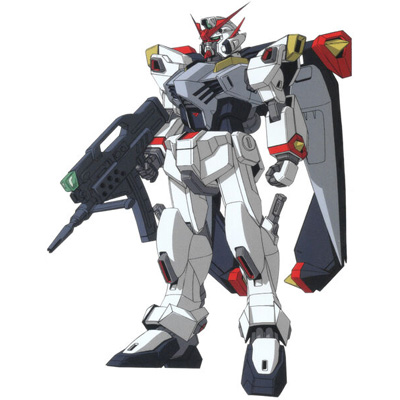

Mecha, also known as meka or mechs, are walking vehicles controlled by a pilot, often appearing in science fiction or other genres involving a fantastic or futuristic element. Mecha are generally, though not necessarily, bipedal, with arms, hands, and fingers capable of grasping objects. A mecha that approximates the shape of a human body allows the use of martial arts movements and swordsmanship, ceremonial acts of honor, saluting, and other human mannerisms that cannot be performed using a tank or airplane. In most fiction in which they appear, mecha are war machines: essentially armored fighting vehicles with legs instead of treads or wheels. Some stories, such as the manga Patlabor and American miniatures game Battletech, also encompass mecha used for civilian purposes such as heavy construction work, police functions or firefighting.
Some sci-fi universes posit that mecha are the primary means of combat, with conflicts sometimes being decided through gladiatorial matches. Others represent mecha as one component of an integrated military force, supported by and fighting alongside tanks, fighter aircraft, and infantry, functioning as a mechanical cavalry. The applications often highlight the theoretical usefulness of such a device, combining a tank's resilience and fire power (though in theory it is impossible for a mecha to wield as large a cannon as a tank, due to recoil) with infantry's ability to cross unstable terrain. In other cases they are demonstrated with a greater versatility in armament, such as in the Armored Core series of video games where mecha can utilize their hands to carry a wide range of armament in the same manner as a person albeit on a much larger scale. The distinction between true mecha and their smaller cousins (and likely progenitors), the powered armor suits, is blurred; according to one definition, a mecha is piloted while a powered armor is worn. Anything large enough to have a cockpit where the pilot is seated is generally considered a mecha.
The first occurrence of mecha in fiction is thought to be the novel The War of the Worlds by H. G. Wells where the Martians use tripod walkers very similar to mecha, but this fails to take into account that, thirty years before, Jules Verne published the La Maison à vapeur (The Steam House), which featured a steam-powered, piloted, mechanical elephant. The first occurrence of mecha robots being piloted by a user from within a cockpit was later introduced in the manga and anime series Mazinger Z by Go Nagai. However, many have argued that the original idea for piloted mechanical suits should be attributed to Robert A. Heinlein. In his 1959 serial Starship Soldier, which was later published as a novel under the title Starship Troopers and then adapted for film in 1997. In his story, Heinlein writes about the soldiers being equipped with powered armor exoskeletons. Whether mecha was inspired by Heinlein's Starship Troopers or not, it was popularized by Japanese anime and manga.
Rarely, mecha has been used in a fantasy convention, most notably in the anime series Aura Battler Dunbine, The Vision of Escaflowne and Maze. In those cases, the mecha designs are usually based on some alternative or 'lost' science-fiction technology from ancient times.
Some sci-fi universes posit that mecha are the primary means of combat, with conflicts sometimes being decided through gladiatorial matches. Others represent mecha as one component of an integrated military force, supported by and fighting alongside tanks, fighter aircraft, and infantry, functioning as a mechanical cavalry. The applications often highlight the theoretical usefulness of such a device, combining a tank's resilience and fire power (though in theory it is impossible for a mecha to wield as large a cannon as a tank, due to recoil) with infantry's ability to cross unstable terrain. In other cases they are demonstrated with a greater versatility in armament, such as in the Armored Core series of video games where mecha can utilize their hands to carry a wide range of armament in the same manner as a person albeit on a much larger scale. The distinction between true mecha and their smaller cousins (and likely progenitors), the powered armor suits, is blurred; according to one definition, a mecha is piloted while a powered armor is worn. Anything large enough to have a cockpit where the pilot is seated is generally considered a mecha.
The first occurrence of mecha in fiction is thought to be the novel The War of the Worlds by H. G. Wells where the Martians use tripod walkers very similar to mecha, but this fails to take into account that, thirty years before, Jules Verne published the La Maison à vapeur (The Steam House), which featured a steam-powered, piloted, mechanical elephant. The first occurrence of mecha robots being piloted by a user from within a cockpit was later introduced in the manga and anime series Mazinger Z by Go Nagai. However, many have argued that the original idea for piloted mechanical suits should be attributed to Robert A. Heinlein. In his 1959 serial Starship Soldier, which was later published as a novel under the title Starship Troopers and then adapted for film in 1997. In his story, Heinlein writes about the soldiers being equipped with powered armor exoskeletons. Whether mecha was inspired by Heinlein's Starship Troopers or not, it was popularized by Japanese anime and manga.
Rarely, mecha has been used in a fantasy convention, most notably in the anime series Aura Battler Dunbine, The Vision of Escaflowne and Maze. In those cases, the mecha designs are usually based on some alternative or 'lost' science-fiction technology from ancient times.
Subscribe to:
Posts (Atom)











